Mass story
Mass storage
磁盘结构
- 磁道:能被磁头访问的一组同心圆
- 扇区:磁道上的区域,数据存放的基本单位
- 柱面:所有盘片同一磁头下的磁道集合
对磁道的划分有两种方法:
- 以同心圆的方式划分:磁盘要使用恒定角速度旋转
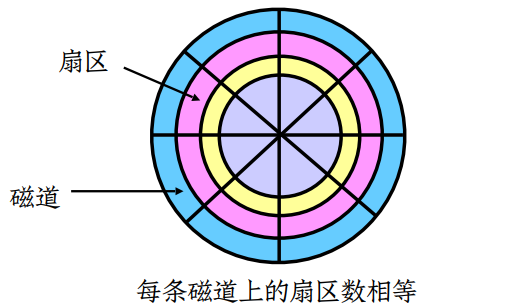
- 以磁道密度相等划分:磁盘转动的线速度相等,即角速度不断改变
磁盘格式化
低级格式化(Low-level formatting
- physical formatting
- 为每个扇区使用特殊的数据结构进行填充,包括一个头 部、数据区域和一个尾部。
- 头部和尾部包含一些控制信息,如扇区号、ECC码(校验码)等。
低级格式化是与操作系统无关的格式化,属于物理级别的格式化,一个磁盘建立柱面划分扇区的过程就是在低级格式化中完成的,当大家买到一块硬盘时,低级格式化就已经完成了。当磁道损坏较高时应该进行低级格式化
高级格式化(High-level formatting)
Logical formatting
构建文件系统,在磁盘上初始化文件系统数据结构,如空 闲和 已分配空间表、一个空目录等。
高级格式化一般是和操作系统有关的
如windows电脑一般采用 NTFS 进行格式化 MAC系统一般采用EXT4 进行格式化
磁盘性能指标
- 查找一个物理块的顺序:柱面号、磁头号和扇区号
- 寻道时间Ts:将磁头定位到正确磁道(柱面)上所花的时 间,与盘片直径和传动臂速度相关,平均20ms。
- 旋转延迟Tr:所查找的扇区转到磁头下所用的时间,与 磁盘的旋转速度有关,一个10,000 r/m的磁盘平均旋转延 迟为3ms。
- 传送时间T:传送扇区内的数据的时间,同样取决于磁盘 的旋转速度,T = b/(rN) (b为要传送的字节数,N为一个 磁道中的字节数,r为转速)
- 总的平均存取时间 Ta = Ts + Tr + T
示例:
1 | 条件假设: |
磁盘调度
disk io request
- Whenever a process needs I/O to or from(读或书) the disk, it issues(发出) a system call to the operating system. The request specifies(指定) several(一些) pieces of information:
- Whether this operation(操作) is input or output
- What the disk address for the transfer(转移) is
- What the memory address for the transfer is
- What the number of sectors(扇区) to be transferred is
disk scheduling
- For a multiprogramming system with many processes, the disk queue may often have several(多个) pending (未决) requests.
FCFS先来先服务
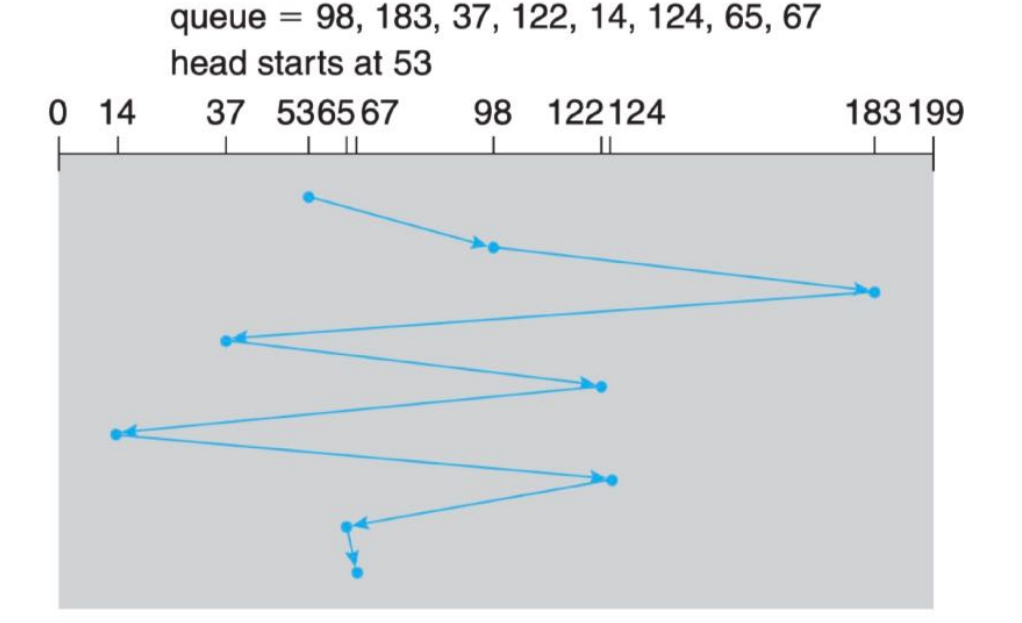
SSTF(Shortest seek time first)
每次寻道均寻找当前队列中,距离当前磁头所在磁道距离最近的柱面
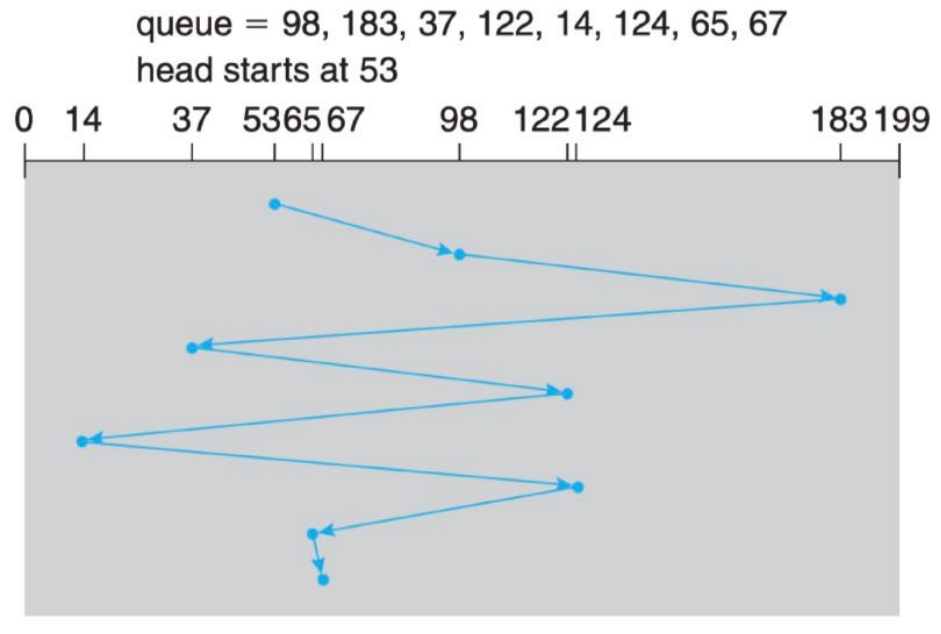
这会导致磁臂粘连现象,这本质也是一种饥饿现象,磁头会读取当前柱面附近的柱面,从而导致与之较远的柱面长时间未被读取,产生饥饿
scan
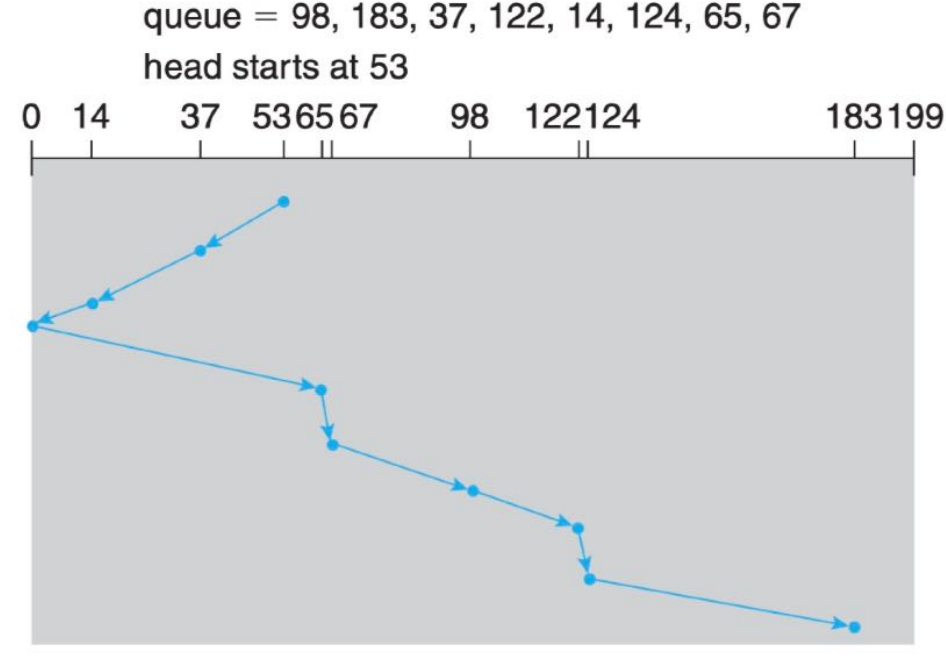
扫描算法,会沿着当前方向一直寻找,直至到最端柱面,在此过程中若经过pending queue中存在的柱面号,则暂停寻找处理数据。
当进程所有访问的柱面是分散的时,采用scan算法时较好
c-scan
scan算法是会原路返回的,但是这一小段时间内pending队列中出现靠近柱面最端的概率并不大,故改进,当扫描到达柱面端时,从另一柱面端开始重新扫描
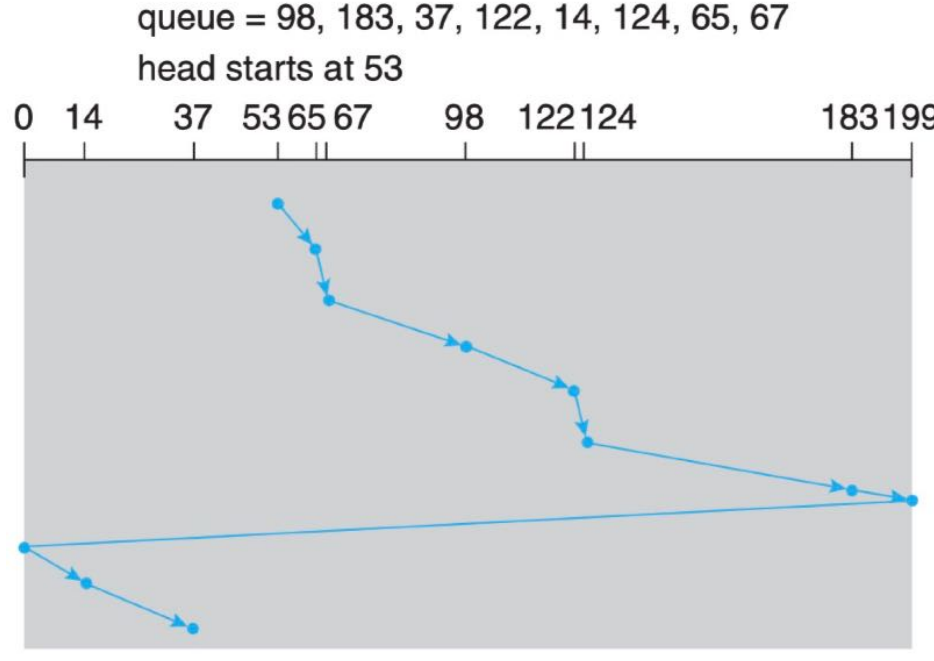
look
scan和c-scan算法,有些蠢,当对应方向之后没有要寻找的柱面时,磁头任然会继续移动直至柱面端点,look对此进行了改善,当对应方向之后没有需要寻找的柱面时,方向将会反转
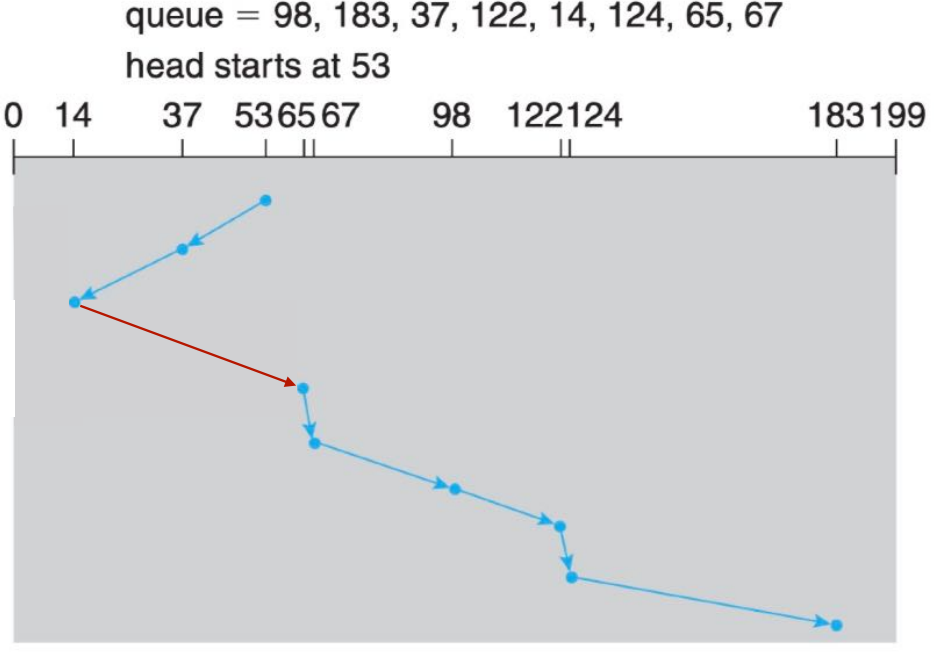
FCFS is the simplest(最简单的).
SSTF is common and has a natural appeal but it may cause a starvation(饥饿) problem.
SCAN and C-SCAN perform better for systems that place a heavy load on the disk.
查看linux中当前的和支持的磁盘调度算法
1 | :~$cat /sys/block/sda/queue/scheduler |
linux io scheduler
- noop:it performs(施行) FCFS policy which is good enough for SSD.
- deadline:it works by creating two queues: a read queue and a write queue. Each I/O request has a time stamp(时间戳) associated(关联) that is used by the kernel for an expiration(过期) time. When an I/O request reaches its deadline, it is pushed to(推到) the highest priority(优先级).
- cfq:Complete(完全) Fairness(公平的) Queueing works by creating a perprocess I/O queue. The goal of this I/O scheduler is to provide a fair I/O priority to each process. While the CFQ algorithm is complex, the gist of this scheduler is that after ordering the queues to reduce disk seeking, it services these per-process I/O queues in a round-robin fashion.